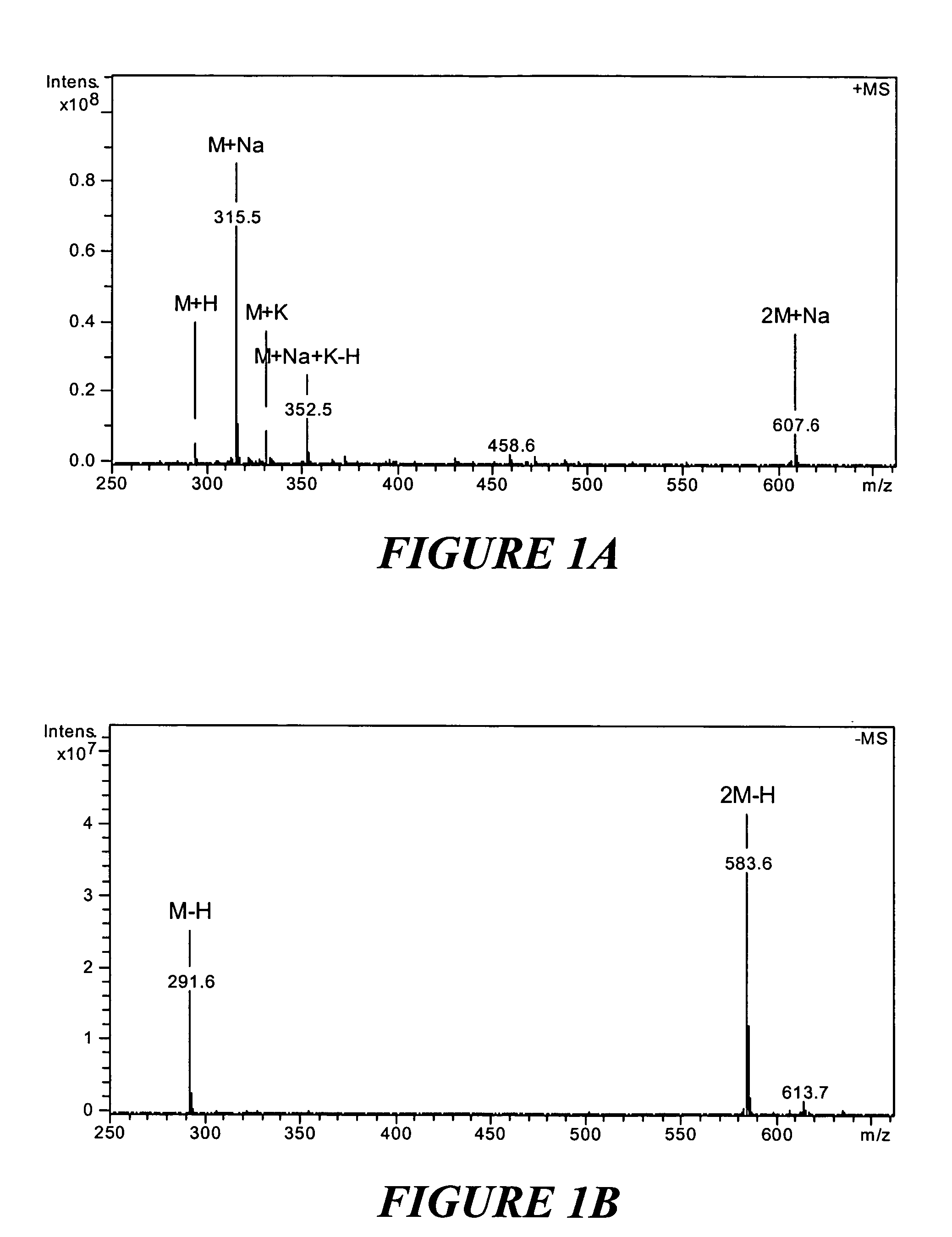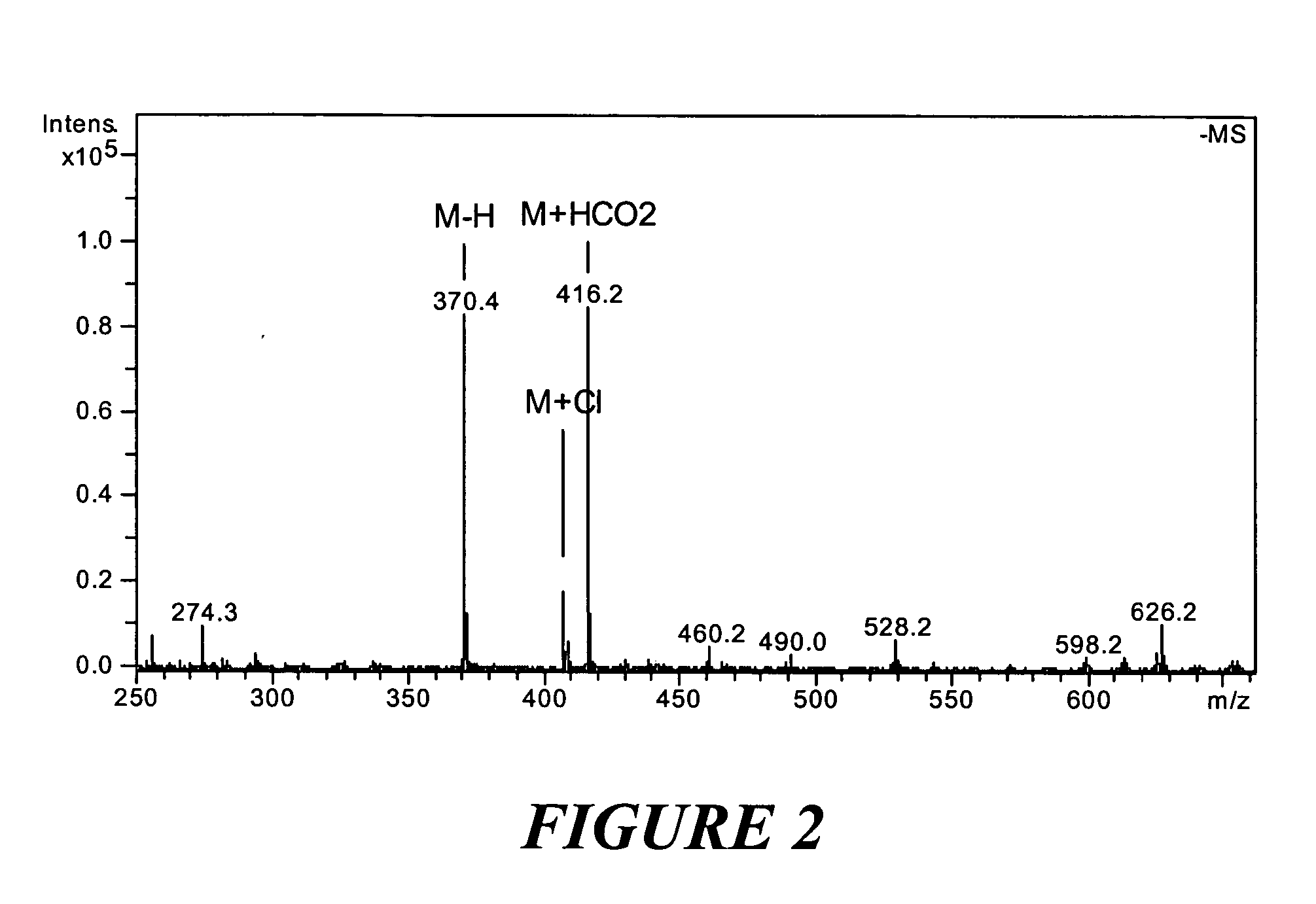Mass spectrometric substance identification
a mass spectrometric and substance technology, applied in the field of mass spectrometric substance identification, can solve the problems of difficult identification of substances, no rapid recognition method of adduct ions, and problematic rapid identification
- Summary
- Abstract
- Description
- Claims
- Application Information
AI Technical Summary
Benefits of technology
Problems solved by technology
Method used
Image
Examples
Embodiment Construction
[0024] The invention involves carrying out a determination of the probable molar mass by recognition of the adduct ion pattern in addition to the search in spectral libraries for the mass spectrometric identification of medium-weight analyte substances ionized by electro spray ionization in order to be sure of the identification. The substances are usually pre-separated by liquid chromatography and are therefore only available for mass spectrometric measurement for a few seconds. All mass spectra and daughter ion spectra must be acquired in these few seconds.
[0025]FIG. 1A shows a positive mass spectrum of a substance ionized by electro spray ionization. Similarly, FIG. 1B shows a negative mass spectrum from the same type of ionization. In the positive spectrum, which is very simple to interpret, in addition to the pseudo-molecular ion, adducts with sodium, with potassium and even with both sodium and potassium occur, in the latter case a deprotonation being necessary in order to re...
PUM
| Property | Measurement | Unit |
|---|---|---|
| molecular weights | aaaaa | aaaaa |
| molecular weights | aaaaa | aaaaa |
| mass difference | aaaaa | aaaaa |
Abstract
Description
Claims
Application Information
 Login to View More
Login to View More - R&D
- Intellectual Property
- Life Sciences
- Materials
- Tech Scout
- Unparalleled Data Quality
- Higher Quality Content
- 60% Fewer Hallucinations
Browse by: Latest US Patents, China's latest patents, Technical Efficacy Thesaurus, Application Domain, Technology Topic, Popular Technical Reports.
© 2025 PatSnap. All rights reserved.Legal|Privacy policy|Modern Slavery Act Transparency Statement|Sitemap|About US| Contact US: help@patsnap.com


